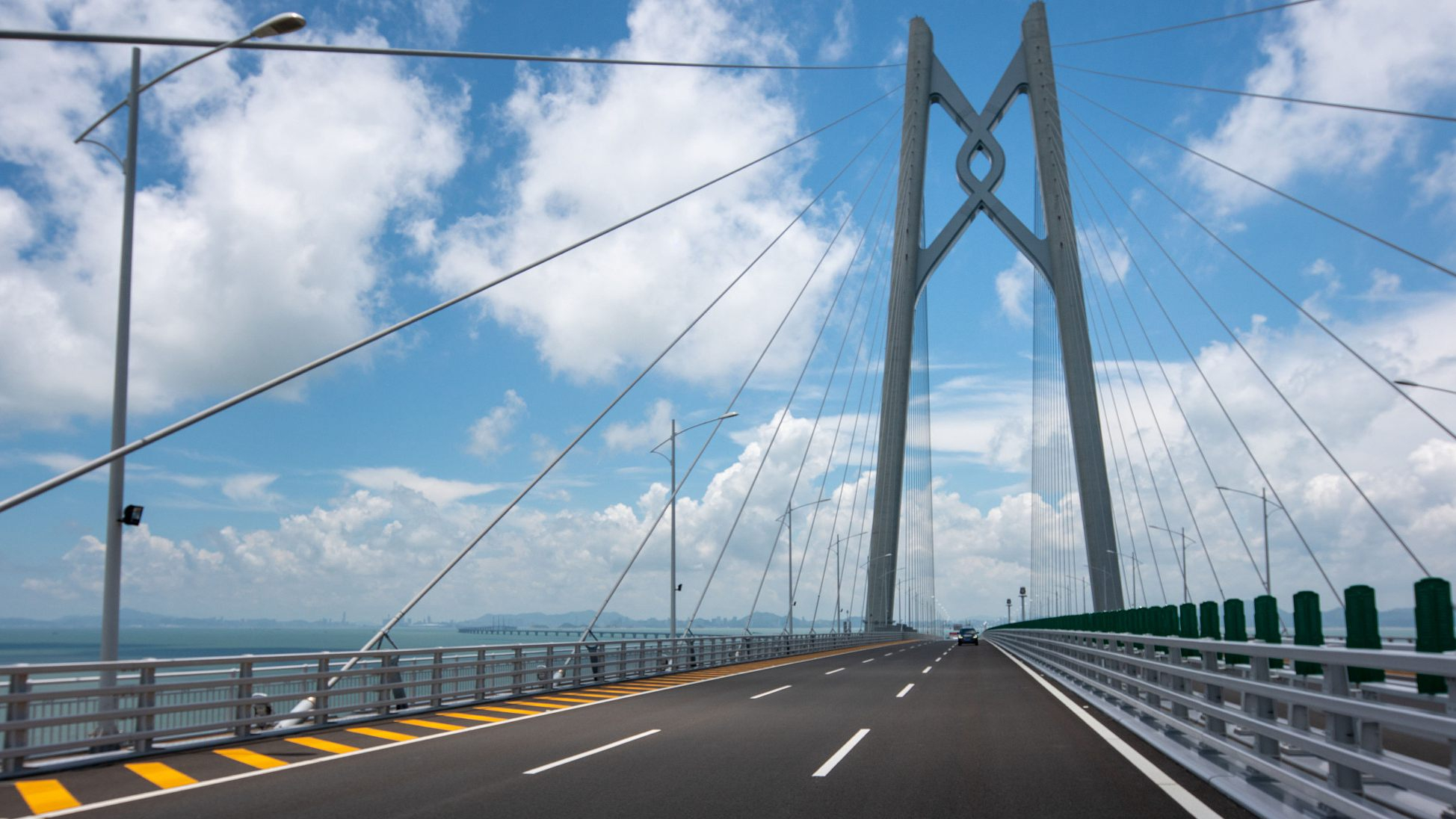Editor's note: This article is an edited translation published by China Plus of a commentary from the Chinese-language "Commentaries on International Affairs."
On Tuesday, Chinese President Xi Jinping attended the opening ceremony for the Hong Kong-Zhuhai-Macao Bridge in Zhuhai. This mega project, which has been under construction for 15 years, officially went into service, providing the first land connection between the mainland city of Zhuhai, and the two special administrative regions, Hong Kong and Macao.
The Hong Kong-Zhuhai-Macao Bridge is the world's longest and most substantial sea-crossing infrastructure project. It is also the most important piece of transportation infrastructure in the Guangdong, Hong Kong and Macao Greater Bay Area (GBA).

A section of the Hong Kong-Zhuhai-Macao Bridge in Hong Kong, October 22, 2018 /VCG Photo
Thanks to the bridge, the travel time from Hong Kong to Zhuhai and Macao can be shortened from three hours down to about 30 minutes, which will greatly help the integration of the three regions.
The bridge will completely change the social, economic, and transport structure of the GBA, according to Meng Fanchao, the bridge's chief designer, adding that it will open up opportunities for a new way of life, and deliver economic benefits worth trillions.
New materials, new processes, and new equipment were needed to make the Hong Kong-Zhuhai-Macao Bridge a reality, with more than 400 patents filed throughout the process. Su Quanke, the chief engineer of the Hong Kong-Zhuhai-Macao Bridge Administration, said that the bridge is "a veritable bridge of technology and a bridge of innovation. Behind these world-class challenges are a series of innovative drivers and strong technical support."
For example, in order to cope with the extreme conditions it might face during its 120-year lifespan, it was engineered to withstand category-16 typhoons and magnitude-7 level earthquakes. This is an extraordinary achievement when you consider that at the same time the construction broke records for the world's largest steel bridge and the world's longest underwater tunnel, and floating installation and that two artificial islands had to be created.

A sunset view of the Hong Kong-Zhuhai-Macao bridge, October 21, 2018 /VCG Photo
At the same time, the construction took place in a waterway that's home to a large number of white dolphins. Despite the scale of the project, the size of the dolphin population in the area has actually increased from 1,200 in 2010 to more than 2,000 today.
Taken together, these achievements help to demonstrate why the bridge is known as "Mount Qomolangma" in the bridge industry, and why The Guardian newspaper named it one of the "seven wonders of the modern world."
The Hong Kong-Zhuhai-Macao Bridge is the most recent example of China's innovation. It is the newest marker of progress in China's 40-year journey of reform and opening-up, as China and its people have sought to build better lives through technological innovation. In 2017, the contribution rate of China's scientific and technological progress to economic growth reached 57.5 percent, close to the target of 60 percent set for 2020.

The C919 is China's first self-developed large passenger plane. /VCG Photo
The number of invention patent applications was almost 1.4 million, ranking China first in the world for seven consecutive years. China broke into the World Intellectual Property Organization's "Top 20 Global Innovation Index" for the first time this year.
And Klaus Schwab, the founder and executive chairman of the World Economic Forum and one of the witnesses of China's reform and opening-up, has described China as being on track to build an innovative society.
On the day before the bridge opened, President Xi emphasized during a visit to the Hengqin New Area in Zhuhai that manufacturing is the key to the real economy. At the core of manufacturing is innovation, and so to master key core technologies, China must be a self-reliant and independent innovator.
In this respect, the opening of this new bridge brings China a big step closer to realizing its plan to transform the Greater Bay Area into a global science and technology innovation center.
(If you want to contribute and have a specific expertise, please contact us at opinions@cgtn.com.)











